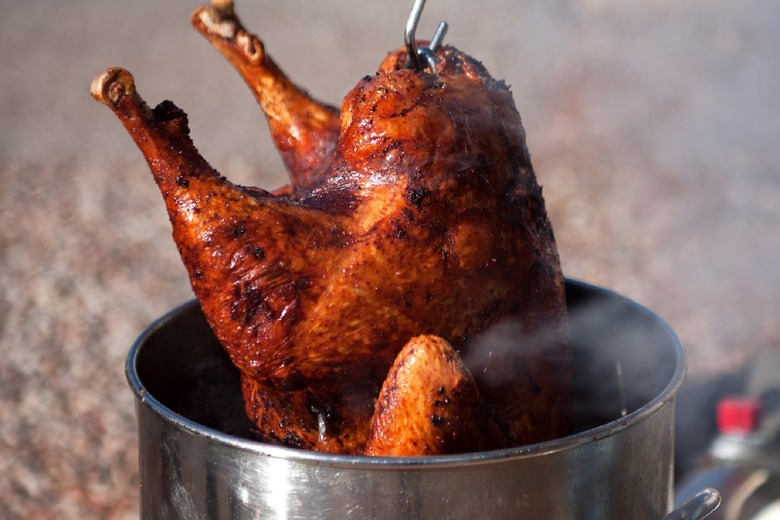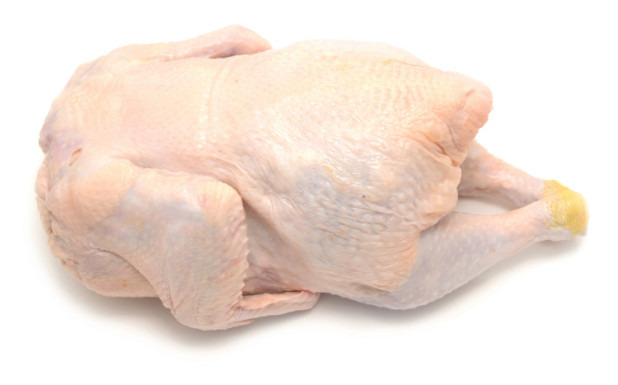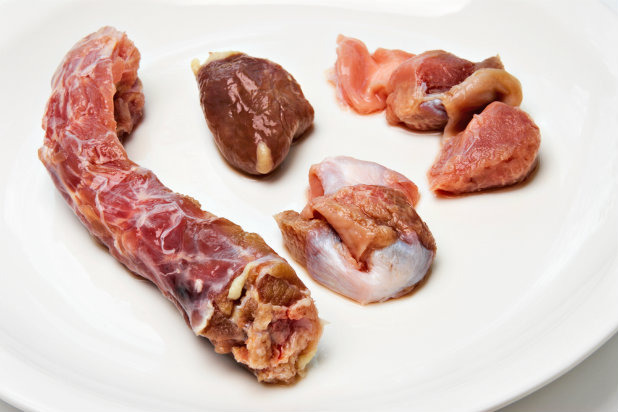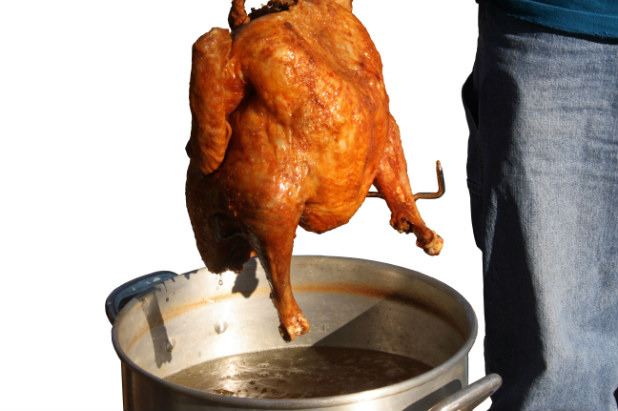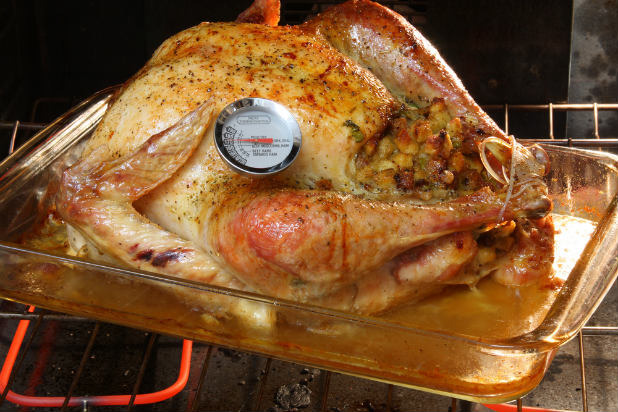How To Fry A Turkey For Thanksgiving Slideshow
Thanksgiving is a great time to try out new recipes, haul out the old ones, and just enjoy the extra time to cook and be merry around your loved ones. Besides all the usual Thanksgiving traditions like pumpkin pie and stuffing, frying the turkey has become increasingly popular over the years. If you know what you're doing and want to try something a little different, this is a really fantastic way to keep all the moisture inside the bird — as opposed to roasting, which often results in a dried-out turkey if you're not religiously basting that bird every 15 minutes or so.
There's a lot of pressure on the cook this time of year, so make sure you are well-prepared and have a plan of action when it comes to taking on this kind of ambitious project. Turkey is known for its flavorful white meat and extremely juicy dark meat, both of which are amplified by deep frying the bird. The crispy outer skin is the real winner here, but really it's all about the sides at this holiday, so make sure to choose some tasty crowd-pleasers like one of these 12 most popular Thanksgiving side dishes!
Thaw the Turkey
This is easier said than done. You need to make sure you completely thaw your turkey, and the best way to do this is by putting it in the refrigerator. Keep the turkey in the wrapping and place it breast side up in the fridge on a baking tray. Make sure it is on the bottom shelf so none of the juices drip onto the other contents of your fridge. Keep in mind that there is about one day of thawing time to every four pounds of turkey, so give yourself enough time before the big day. The other option is to use water and submerge your bird in water. You can read more about this here, but this is not my preferred method, as I feel it is a huge waste of water.
Remove Packaging and Innards
Remove the packaging, and make sure none of your fresh produce is nearby when you prepare to take out the innards. I like to use gloves and maintain a separate board in my kitchen for raw meat. Remove all innards, neck, and giblets, then discard or set aside for later use. I like to make a broth or a gravy for the stuffing with them. All you do is add them to a saucepan, cover with water, add salt, and simmer for an hour.
Preheat Oil
If you have brined your turkey or it is wet from being defrosted, pat down your bird and then add any seasoning. You want to make sure there is no water on there. Preheat your oil in the fryer to 400 degrees Fahrenheit, and add your oil to the fryer (either indoors or outdoors) — but make sure that you don't fill it beyond the maximum fill line.
Fry the Turkey
Once the oil is finished heating, slowly lower the turkey into the fryer. (Don't worry if your turkey is not completely immersed in the oil!) Cook the turkey according to weight. It should be cooked about three and a half minutes per pound. If your turkey is 14 pounds or less, you can deep-fry it whole. If it's 15 pounds or more, separate the legs and thighs from the breast and fry them separately. While it's cooking enjoy some of these Thanksgiving snacks!
Check for Doneness
To know when the turkey is done, use a meat thermometer. The dark meat should be cooked to an internal temperature of 175 to 180 degrees, and the white meat to 165 to 170 degrees. When the turkey is done cooking, slowly lift it from the pot and place it in a pan on paper towels to drain.
Let it Rest
The turkey will be very hot, so allow the turkey rest for 20 to 30 minutes before carving. Make sure you remove the wishbone when you go to carve the breast, as it will make it much easier. When it comes to carving a turkey, we've got you covered this holiday season — check out these 10 common carving mistakes and how to avoid them.
For Bradford Thompson's Deep Fried Turkey Recipe, click here,
